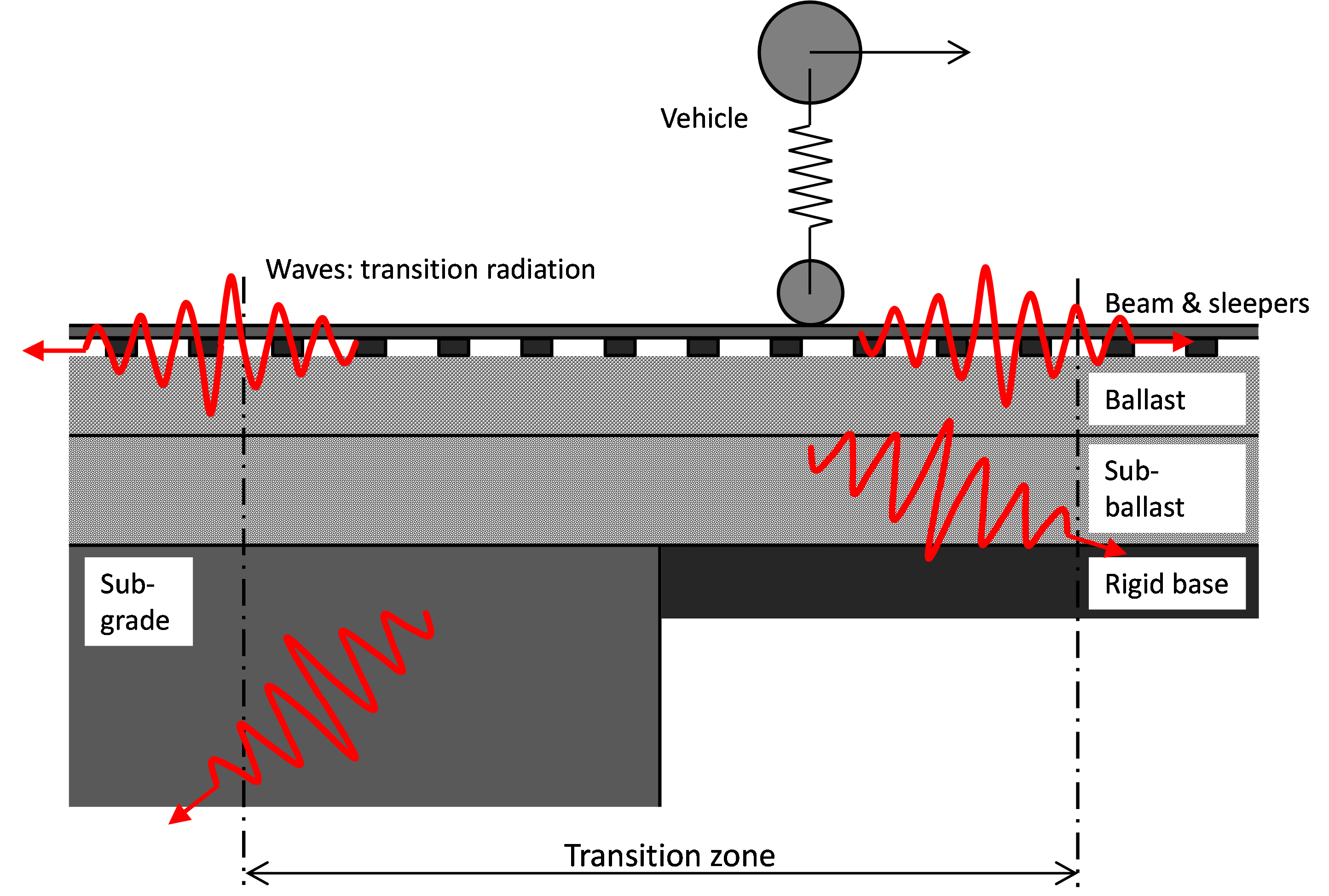Dynamics of railway tracks and transition zones
Railways in delta areas (soft soils) suffer from exceptionally high maintenance costs, but knowledge lacks to develop an effective strategy to reduce those costs. The high costs originate from enhanced degradation induced by strong amplifications of local stresses and strains and undesired vehicle-track interactions. The strong longitudinal variations in geometry, component configuration and constitutive properties of the railway tracks play an important role, in particular the jump in railway support stiffness at transitions. This jump is the source of transitional wavefields. Several measures to suppress the wavefields by smoothening the jump have been tested; some effective and some not. Developing an effective strategy to reduce maintenance by optimisation of transitions is hindered by a lack of understanding of the underlying mechanisms of wavefield excitation and suppression.
Research focus
- Acquiring understanding of the mechanisms underlying railway track degradation at transition zones
- Development of smart and robust mitigation measures to eliminate unwanted dynamic amplifcations
Industry partners
ProRail, Tensar International, Deltares, Movares
Contact
Schematic of railway-track transition zone at which waves are generated that lead to dynamic amplifications
